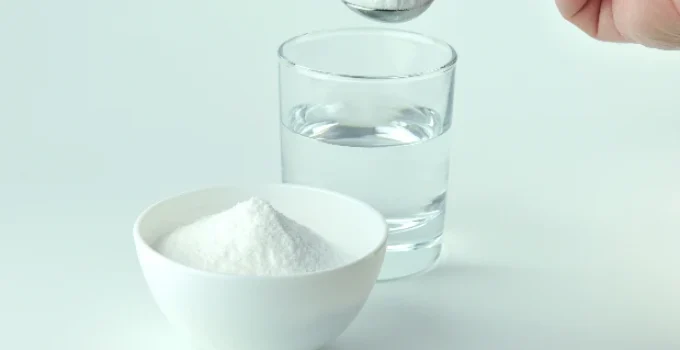What Makes an Element Soluble?
When you mix salt into water, it disappears—but where does it go? The answer lies in solubility, the ability of a substance to dissolve in a liquid. Some elements mix easily with water, while others stay stubbornly solid. But why? In this article, we’ll break down what makes an element soluble, how it happens, and why it matters—from your body to the oceans.
🔍 Dive Deeper
- What Does “Soluble” Mean?
- How Do Elements Dissolve?
- Which Elements Are Most Soluble?
- What Affects Solubility?
- Why Is Solubility Important?
- 🎯 Final Thoughts
- 📚 References
💧What Does “Soluble” Mean?

Soluble means something can dissolve in a liquid—usually water. When an element is soluble, it breaks down and spreads out evenly in the liquid so you can’t see it anymore. For example, when salt (sodium chloride) dissolves in water, the sodium (Na⁺) and chloride (Cl⁻) ions separate and float around.
➡️ Fun Fact: The word “soluble” comes from the Latin word solvere, meaning “to loosen or untie.”
| Term | Meaning |
|---|---|
| Solute | The substance that dissolves |
| Solvent | The liquid that does the dissolving |
| Solution | The mixture of solute and solvent |
🧠 Statistic: About 97% of Earth’s water is salty because it contains dissolved elements like sodium, magnesium, and calcium [1].
🧲How Do Elements Dissolve?
To dissolve, an element needs to interact with the molecules in the liquid. Water is called a “polar” molecule, which means it has a positive end and a negative end. These ends pull on the charged parts of elements, like sodium or potassium, and break them apart.
So, an element can dissolve if:
- It forms ions (charged particles),
- It has a bond that water can break, or
- It interacts well with water’s polarity.
Some elements don’t dissolve at all. For example, gold (Au) and silver (Ag) are not soluble in water because their atoms stay tightly packed together.
🌍 Statistic: Water is known as the “universal solvent” and can dissolve more substances than any other liquid [2].
🧂Which Elements Are Most Soluble?
Some elements dissolve easily because they are alkali metals (like sodium or potassium). Others, like transition metals (such as iron or copper), need special conditions or only dissolve a little.
Here’s a quick guide:
| Element | Solubility in Water | Type |
|---|---|---|
| Sodium (Na) | High | Alkali Metal |
| Calcium (Ca) | Moderate | Alkaline Earth Metal |
| Iron (Fe) | Low | Transition Metal |
| Gold (Au) | Insoluble | Transition Metal |
| Chlorine (Cl) | High (as ion) | Halogen |
💡 Statistic: Sodium chloride (NaCl) dissolves in water up to 357 grams per liter at room temperature [3].
🌡️What Affects Solubility?
Many factors change how well an element dissolves:
- Temperature: Warm water usually dissolves things faster.
- Pressure: Gases like oxygen dissolve better under high pressure.
- pH level: Acidic or basic solutions can affect whether an element stays dissolved.
- Form of the element: Some dissolve better as ions, others don’t dissolve at all in solid form.
🔬 Statistic: Every 10°C rise in water temperature can increase solubility by 2–3 times for some salts [4].
☁Why Is Solubility Important?
Solubility is more than just science—it’s vital for life and the environment.
- In the body: Your body dissolves minerals like calcium and potassium to carry them in the blood.
- In nature: Oceans carry dissolved elements that feed marine life.
- In medicine: Solubility affects how fast a drug works in your body.
- In pollution: Harmful elements like lead can dissolve in water and become dangerous.
🚰 Statistic: According to the EPA, over 60,000 U.S. water systems test for dissolved lead and other elements each year [5].
🎯 Final Thoughts
So, what makes an element soluble? It comes down to how well it interacts with the solvent—usually water. Elements like sodium dissolve easily because they form ions that water can pull apart. Others, like gold, resist dissolving because of strong atomic bonds. Solubility helps us understand everything from cooking to climate science—and even how our bodies stay alive!
📚 References
- United States Geological Survey (USGS). “How Much Water is There on Earth?”
https://www.usgs.gov/special-topics/water-science-school - Lenntech. “Water as the Universal Solvent.”
https://www.lenntech.com/library/solvents/water.htm - Chemistry LibreTexts. “Solubility of Sodium Chloride in Water.”
https://chem.libretexts.org - Royal Society of Chemistry. “Factors Affecting Solubility.”
https://edu.rsc.org - U.S. Environmental Protection Agency (EPA). “National Primary Drinking Water Regulations.”
https://www.epa.gov/ground-water-and-drinking-water
📌 Learn More About Elements
- What Makes an Element Soluble?
- What Makes Up an Element?
- What Makes an Element Reactive?
- What Makes an Element a Metal?
- What Makes an Element Stable?
